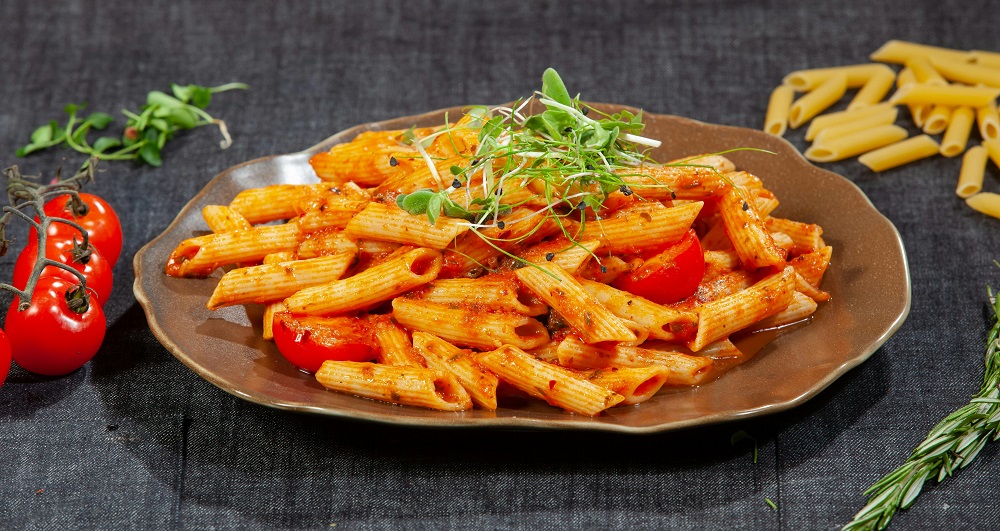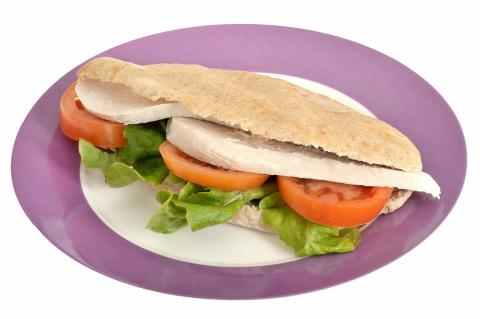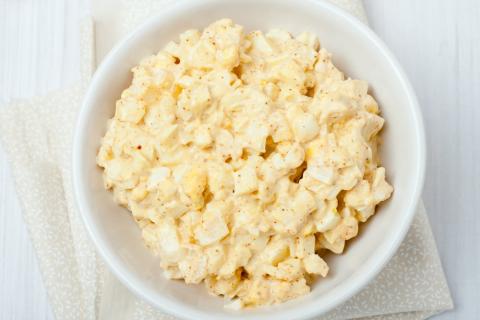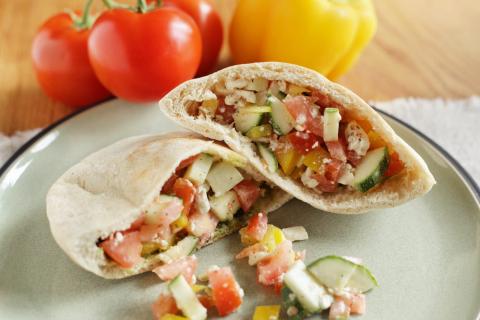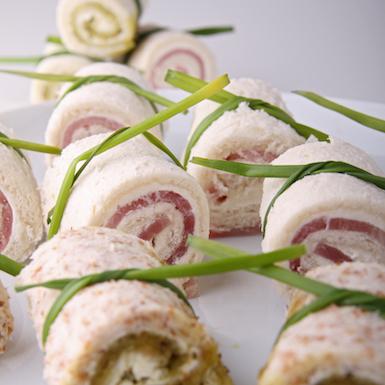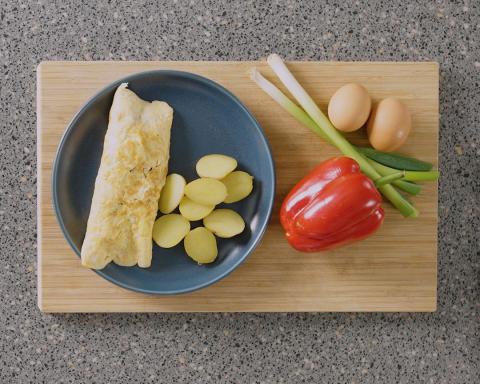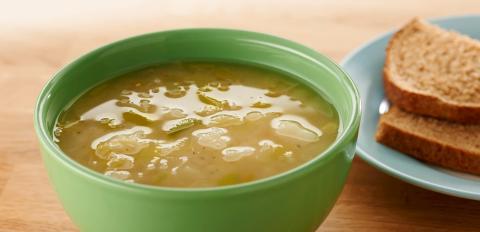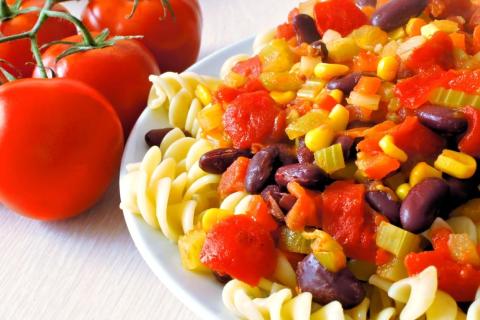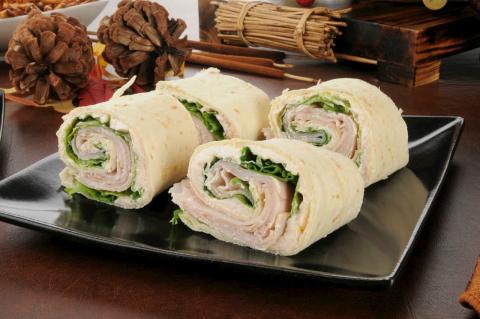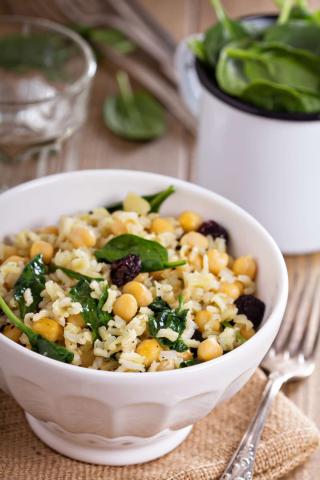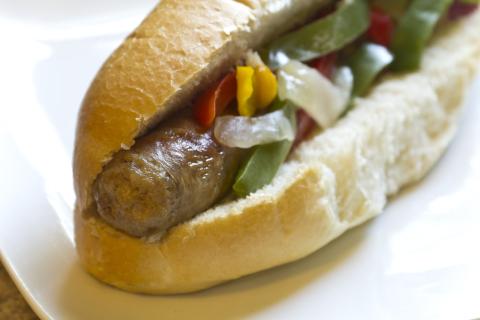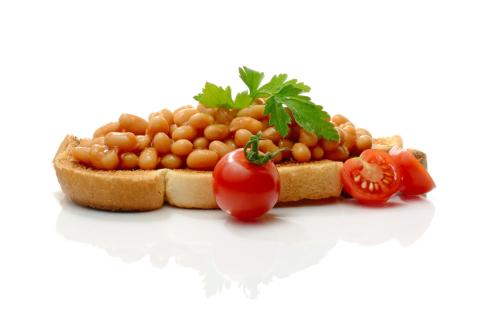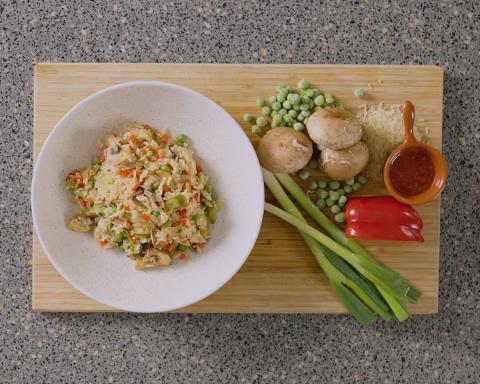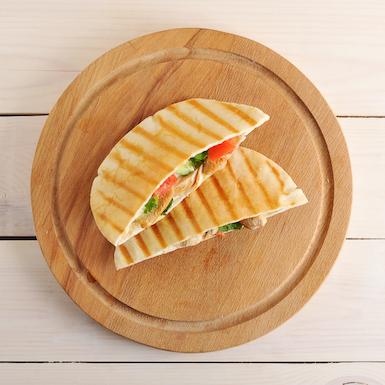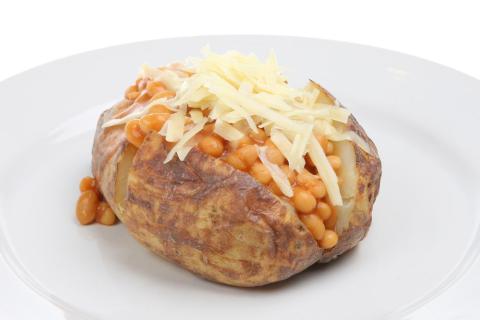- 4 Cups (300g) Pasta
- ¾ Large Tin Or 2 Small Tins (280g) Pink Salmon
- 1 Small Tin (200g) Sweetcorn
- 1 Medium Sized (160g) Red Pepper
- 2 Medium Sized (170g) Tomatoes
- 6 Tablespoons (90g) Reduced Calorie Mayonnaise
- 1 Pinch (1g) Ground Black Pepper
Ingredients
Allergy Disclaimer
Always check the label of each ingredient for allergy warnings.
Method
- Cook pasta as per the instructions on the packet and rinse with cold water
- Remove any unwanted skin and bones from salmon by separating fish with a fork.
- Drain the sweetcorn.
- Chop the pepper into small pieces and slice the tomatoes into bite size pieces.
- Mix the vegetables, salmon and pasta together with mayonnaise.
- Add black pepper to taste then serve.
Time Saver Tips
Try cooking extra – you can keep the rest in the fridge for lunch the next day.
Cost Saver Tips
It's often cheaper to buy a large tin of salmon.
Tips for Kids
Kids can use a table knife to help chop the softer vegetables and will love mixing it all up together. Try using their favourite shaped pasta.
Nutritional Information
Based on a single serving of 375g (% of an adult's reference intake)
Energy
401 kcals ( 20 %)
1,683 kJ ( 20 %)
Fat
2.3 g ( 11 %)
Saturates
53.3 g ( %)
Sugar
9 g ( 10 %)
Salt
1.5 g ( 25 %)
Detailed nutritional information
| Per 100g | Per 375g serving | |
|---|---|---|
| Energy Kcals | 107 | 401 |
| Energy Kj | 449 | 1,683 |
| Protein | 5.9 g | 22.1 g |
| Total Fat | g | g |
| Saturated Fat | 0.6 g | 2.3 g |
| Carbohydrates | 14.2 g | 53.3 g |
| Total Sugars | 2.4 g | 9 g |
| NSP Fibre | 1 g | 3.8 g |
| Sodium | 156 mg | 585 mg |
| Salt | 0.4 g | 1.5 g |
Find out about nutritional labelling
Nutrition labels on the front of packaging
- Most of the big supermarkets and many food manufacturers display nutritional information on the front of pre-packed food.
- Front of pack nutrition labels provide information on the number of grams of fat, saturated fat, sugars and salt and the amount of energy (in kJ and kcal) in a serving or portion of a recipe.
- The labels also include information about reference intakes (expressed as a percentage) which are guidelines about the approximate amount of particular nutrients and energy required for a healthy diet.
- The colour coding tells you at a glance if the food has high (red), medium (amber) or low (green) amounts of fat, saturated fat, sugars and salt.
- The more greens on the label, the healthier the choice
- Amber means neither high nor low, so you can eat foods with all or mostly ambers on the label most of the time.
- Reds on the label means the food is high in that nutrient and these are the foods we should cut down on. Try to eat these foods less often and in small amounts.
Food shopping tips
If you’re trying to decide which product to choose, check to see if there's a nutrition label on the front of the pack. This will help you to quickly assess how your choices stack up. You will often find a mixture of red, amber and green colour coding for the nutrients. So when you're choosing between similar products, try to go for more greens and ambers and fewer reds if you want to make a healthier choice.
 Activities & Play
Activities & Play Behaviour
Behaviour Childcare
Childcare Development & Growing Up
Development & Growing Up Family, Friends & Relationships
Family, Friends & Relationships Feeding Your Baby
Feeding Your Baby Food & Eating
Food & Eating Health & Safety
Health & Safety Mental Health & Wellbeing
Mental Health & Wellbeing Money & Work
Money & Work Online Behaviour & Safety
Online Behaviour & Safety Pregnancy & First Days
Pregnancy & First Days School & Education
School & Education Sleep
Sleep

